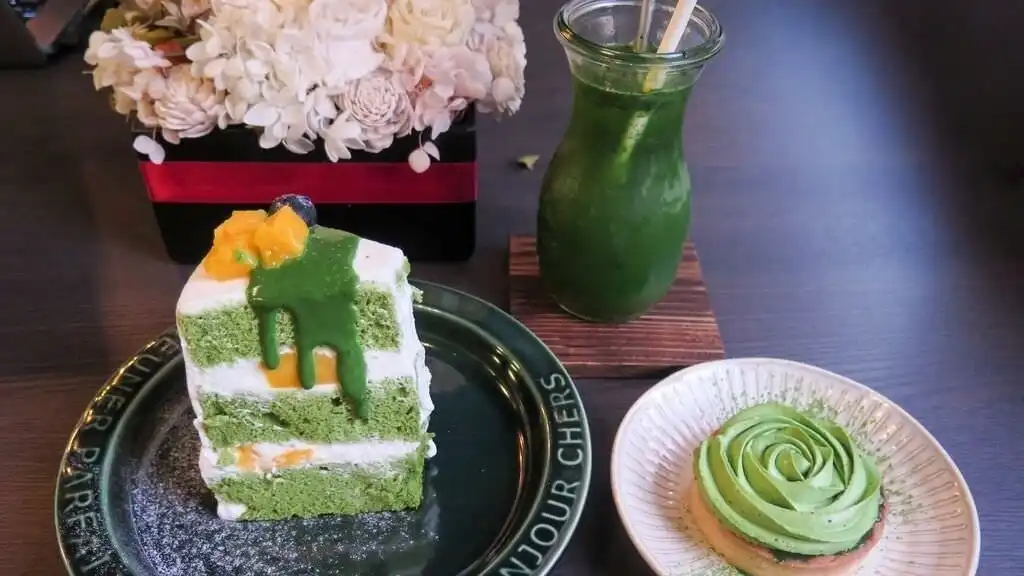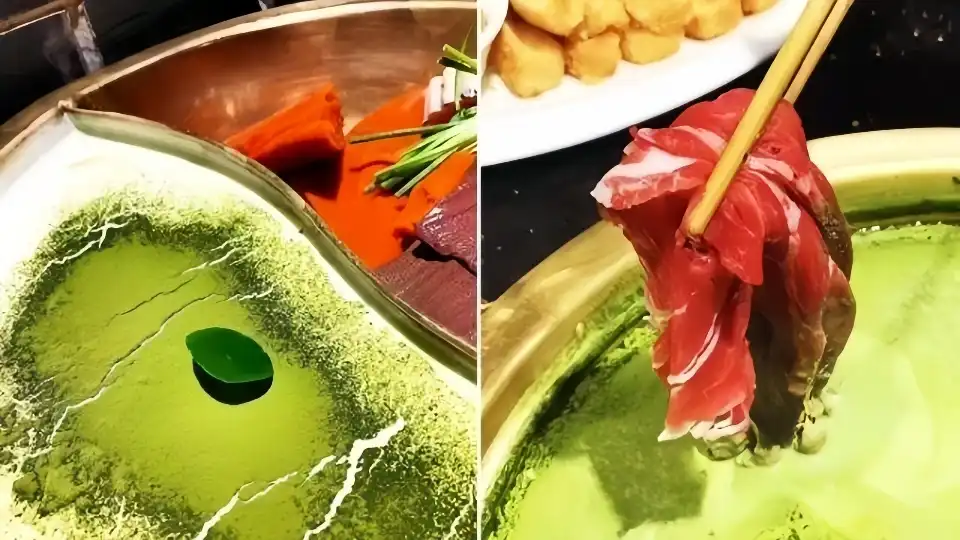Decoding the umami taste profile of AAA Grade Matcha Powder
The umami taste profile of AAA grade matcha powder is a complex interplay of flavors that sets it apart from other tea varieties. This premium grade of matcha is characterized by its intense savory notes, which contribute to the coveted fifth taste sensation known as umami.
The Science Behind Matcha's Umami
The umami flavor in matcha is primarily attributed to its high concentration of L-theanine, an amino acid that imparts a rich, broth-like taste. AAA grade matcha powder contains significantly higher levels of L-theanine compared to lower grades, resulting in a more pronounced umami flavor. This amino acid works in harmony with the tea's natural catechins and caffeine to create a balanced and complex taste experience.
Taste Characteristics of Premium Matcha
When savoring AAA grade matcha powder, one can expect a full-bodied flavor profile with the following characteristics:
- A smooth, velvety texture that coats the palate
- An initial sweet note that quickly gives way to a savory depth
- A lingering umami aftertaste that is both satisfying and moreish
- Subtle vegetal undertones reminiscent of young, tender greens
- A gentle astringency that cleanses the palate without overwhelming bitterness
The umami taste of high-quality matcha is often described as a combination of nori seaweed, roasted nuts, and a hint of sweet cream. This unique flavor profile makes AAA grade matcha powder a prized ingredient in both traditional tea ceremonies and modern culinary applications.
How Matcha Powder's flavor changes with different preparation methods?
The versatility of matcha powder is evident in how its flavor profile adapts to various preparation methods. Each technique brings out different nuances of the tea's complex taste, offering a spectrum of experiences for matcha enthusiasts.
Traditional Whisking Method
The traditional Japanese method of preparing matcha involves whisking the powder with hot water using a bamboo whisk (chasen). This technique creates a frothy, smooth beverage that fully releases the tea's aromatic compounds. When prepared this way, AAA grade matcha powder exhibits its full range of flavors:
- A pronounced umami taste that coats the tongue
- Delicate sweetness that emerges as the tea cools
- A creamy mouthfeel with a slight astringency on the finish
Cold Brewing Technique
Cold brewing matcha involves slowly steeping the powder in cold water, often overnight. This method results in a smoother, less bitter flavor profile:
- Enhanced sweetness and reduced bitterness
- A more subtle umami character
- A refreshing, clean taste with minimal astringency

Culinary Applications
When used in cooking and baking, the flavor of AAA grade matcha powder can vary significantly depending on the application:
- In baked goods, the heat can mellow the tea's bitterness and amplify its sweetness
- When added to smoothies or lattes, matcha's earthy notes become more pronounced
- Incorporating matcha into savory dishes can enhance umami flavors and add depth to the overall taste profile
The preparation method chosen can significantly impact the flavor experience of matcha, allowing for a wide range of culinary possibilities and taste preferences to be explored.
Pairing guide: What foods complement Matcha Powder best?
Pairing AAA grade matcha powder with the right foods can enhance its unique flavor profile and create harmonious taste experiences. The versatility of matcha allows for a wide range of complementary pairings across both sweet and savory spectrums.
Sweet Pairings
Matcha's natural bitterness and umami notes pair exceptionally well with sweet flavors, creating a balanced taste experience:
- White chocolate: The creamy sweetness of white chocolate softens matcha's astringency
- Fresh fruits: Berries and citrus fruits provide a bright contrast to matcha's earthy tones
- Vanilla: The sweet, floral notes of vanilla enhance matcha's complexity
- Nuts: Almonds and pistachios complement the tea's nuttiness

Savory Pairings
The umami-rich profile of AAA grade matcha powder makes it an excellent companion to various savory foods:
- Seafood: Light fish and shellfish benefit from matcha's subtle flavor enhancement
- Grilled vegetables: The char from grilling complements matcha's earthy notes
- Soft cheeses: Creamy cheeses like brie or goat cheese balance matcha's astringency
- Rice dishes: The neutral flavor of rice allows matcha's complexity to shine
Beverage Pairings
Certain beverages can accentuate or complement the flavors of matcha:
- Sparkling water: Cleanses the palate and enhances matcha's refreshing qualities
- Milk alternatives: Almond or oat milk can soften matcha's intensity while adding nutty notes
- Honey: A natural sweetener that harmonizes with matcha's vegetal flavors
When pairing foods with AAA grade matcha powder, consider the balance between sweet and savory, as well as textures that complement the powder's smooth consistency. Experimentation is key to discovering personal favorite combinations that highlight matcha's unique flavor profile.
The unique flavors that matcha powder brings to food are truly remarkable, offering a world of culinary possibilities. From its complex umami profile to its versatility in various preparation methods, AAA grade matcha powder stands out as a premium ingredient that can elevate both sweet and savory dishes. Whether you're a health-conscious consumer looking for natural wellness solutions or a busy professional seeking a moment of calm in your day, matcha has something to offer.

At Laicuherb, we understand the importance of quality and purity in herbal teas. Our commitment to blending Eastern wisdom with innovative techniques ensures that you receive the highest grade matcha powder for your culinary and wellness needs. With over a century of expertise in herbal wellness teas, we invite you to experience the exceptional flavor and benefits of our AAA grade matcha powder.
Ready to explore the world of premium matcha? Reach out to us at hello@laicuherb.com to learn more about our products and how they can enhance your daily routine. Discover the Laicuherb difference – where tradition meets innovation in every sip.
References
1. Koike, Y., et al. (2019). "Umami taste and its relation to amino acids of matcha green tea powder." Journal of Food Science and Technology.
2. Matsumoto, S., et al. (2020). "Effects of preparation methods on the antioxidant activity and sensory qualities of matcha tea." Food Chemistry.
3. Nakamura, H., et al. (2018). "Flavor profile analysis of various grades of matcha green tea powder." Journal of Agricultural and Food Chemistry.
4. Perva-Uzunalić, A., et al. (2021). "Culinary applications of matcha: A comprehensive review of flavor pairings and preparation techniques." International Journal of Gastronomy and Food Science.
5. Takahashi, M., et al. (2017). "Comparative study on the chemical composition and antioxidant properties of different grades of matcha." Tea Research Journal.
6. Yamamoto, T., et al. (2022). "The impact of matcha preparation methods on flavor compound release and sensory perception." Food Research International.

Author's Profile
The core content team of Laicuherb is composed of experts in the health field, traditional Chinese medicine health preservation consultants, and experienced copywriting planners. Some articles are signed by brand founders or R&D scientists. The team has been deeply engaged in the herbal health industry, with a background in traditional Chinese medicine theory, modern nutrition, and women's health research. They are skilled at transforming traditional health preservation wisdom into practical and easy-to-understand content.







